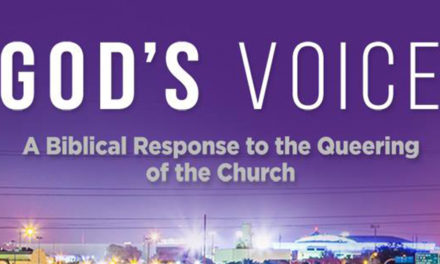Pornography: The Issue
The Attorney General’s Commission on Pornography defined pornography as “sexually explicit material designed primarily for arousal.” This broad term encompasses magazines, videos, websites and photos and can be divided into two legal categories: indecent (legal) and obscene (illegal) material. According to some estimates, the industry generates $10-14 billion a year in the United States. 1
What is Legal?
Pornography appears to be everywhere, giving the illusion that all pornography is legal, apart from sexual abuse of children, violent torture or sex with animals. This myth is perpetuated by pornographers because it allows them to conduct business with little threat of legal action. The truth is that much of the pornographic material commonly sold and distributed in the United States today may be in violation of federal and local obscenity statutes.
Federal law prohibits the sale, distribution or dissemination of obscene materials through the mail, over the broadcast airwaves, on cable or satellite TV, on the Internet, over the telephone or by any other means that cross state lines. Most states also have specific laws banning the sale or distribution of obscene pornography within state borders. The only protection for obscene material recognized by the U.S. Supreme Court is personal possession in the home (Stanley v. Georgia). Learn more about federal and state obscenity here.
How to Determine if Material is Obscene
The Supreme Court affirmed in Miller v. California that obscenity was not protected speech. Further, the court ruled that each community is responsible for setting its own standards about what is considered to be obscene material. If pornographic material is prosecuted and brought to trial, a jury can deem it obscene based on:
- whether “the average person, applying contemporary community standards” would find that the work, taken as a whole, appeals to the prurient interest;
- whether the work depicts or describes, in a patently offensive way, sexual conduct specifically defined by applicable state law; and
- whether the work, taken as a whole, lacks serious literary, artistic, political or scientific value.
Further Guidance from the Court
The Court spelled out a few clear examples of what it thought could be considered obscene:
- Patently offensive representations or descriptions of ultimate sexual acts, normal or perverted, actual or simulated
- Patently offensive representations or descriptions of masturbation, excretory functions and lewd exhibition of the genitals
These examples provide greater clarity about the potential illegality of mainstream pornography. Clearly much of what is commonly sold in sex shops or viewed online fits within these parameters. Obscene pornography would not flourish if federal and state laws were consistently and vigorously enforced.
Importance of Consistent Law Enforcement
Too often, people feel overwhelmed by the pornographic sexuality pervading society and believe nothing can be done about it. On the contrary, if more people acted on their convictions, voiced their concerns publicly and demanded change, they would find a significant shift in public decency.
One of the most effective but least used tools to combat illegal pornography is enforcing existing laws. If obscenity cases aren’t brought to trial, a community has no opportunity to exercise its constitutional right to determine its own standards. Moreover, the absence of effective enforcement favors criminals and lowers community standards because material is presumed to be legal unless proven otherwise in a court of law.
Setting high community standards requires 1) effective elected officials, 2) consistent law enforcement and 3) active and concerned citizens. Chief among these are active, informed and vigilant citizens. Without a community working to inform public officials about the harms of obscenity and positively encouraging investigations of suspected obscenity crimes, little will be done.
Pornography: Talking Points
Silence about pornography indicates approval – both to elected leaders and society at large. Therefore, every Christian should be equipped to effectively communicate the dangers of pornography to those who would defend it.
The following talking points can equip you to engage others on this issue:
- Pornography has destroyed the lives of many individuals – including countless children.
- Pornography is addictive, and the addiction is progressive: once addicted, a person’s need for pornography escalates, the person grows desensitized to obscene material, and this escalation and desensitization drives many addicts to act out their fantasies on others. 1
- Experts believe that a pornography addiction may be harder to break that a heroin addiction. 2
- Pornography destroys marriages and families. Excessive interest in online pornography strongly contributes to divorce. 3
- Pornography seriously damages a child’s mental and emotional development. Children cannot filter pornography out of their worldview; thus, exposure at a young age creates an unhealthy view of human sexuality.
- Children who are exposed to pornography tend to exhibit sexually deviant attitudes and behavior, including sexual violence and crime.
- Violent pornography reinforces aggressive behavior and negative attitudes toward women.
- Pornography plays a significant role in sexual violence. The most common interest among serial killers is hard-core pornography.
- Given the overwhelming evidence of pornography’s harm, parents should act to protect their children from pornographic material. Efforts might include:
- Warning children about the dangers of pornography
- Establishing online safety basics
- Using computer filtering software
- Defining clear media standards
- Monitoring the amount and quality of all media children consume
- Giving children a compelling biblical worldview regarding God’s design for sexuality and relationships – focusing on the good, the true and the beautiful.
- Given the overwhelming evidence of pornography’s harm, the government has a compelling interest in protecting society from these damaging effects.
- Lax enforcement of federal and state laws has essentially given obscene material the protection denied to it in the Constitution. Active prosecution must change this trend.
Pornography: Cause for Concern
Whether legally classified as obscene or indecent, all pornography is harmful. Pornography reduces human beings to sexual commodities that can be bought, sold, used and discarded. No one is immune to the mental, emotional, spiritual and even physical consequences of viewing pornographic material. These effects are not confined to the individuals viewing pornography; they extend to families and culture as well.
Centerfold Syndrome
In his book, The Centerfold Syndrome, psychologist Gary Brooks identified the relational impact on men who consume a steady diet of pornography:
- Voyeurism: An obsession with visual stimulation that minimizes all other features of a healthy relationship.
- Objectification: An obsession with body parts at the expense of the whole person.
- Validation: A condition in which a man needs beautiful, sexy or sexually submissive women to validate himself and his masculinity.
- Trophyism: Treating women as collectibles and property.
- Fear of Intimacy: An inability to get beyond centerfold images of women in order to enter a real relationship.
Addictive and Progressive
Dr. Victor Cline identified a four-stage progression detailing the addictive quality of pornography.
According to Cline, after exposure and repeated viewing, a person enters stage one, which is addiction. Multiple research studies show that porn viewing stimulates a powerful cocktail of neurotransmitters that floods the brain and provides a high similar to that produced by narcotics.
Once addicted, a person may reach stage two, which is escalation. In this stage, material that formerly produced a”high” no longer does. More material, longer viewing times and coarser and more degrading material is sought in order to achieve the same degree of stimulation.
The third stage is desensitization. Dr. Cline wrote: “Material which was originally perceived as shocking, taboo-breaking, illegal, repulsive or immoral, in time, comes to be seen as acceptable and commonplace.” Sadly, many who are arrested for possessing child pornography say they never started out looking for it, but had become bored with regular pornography.
The final stage involves acting-out what the user has seen in pornography. This could take the form of seeking out prostitutes, engaging in group sex, voyeurism, inflicting pain, compulsive promiscuity, committing rape or child sexual assault.
Effects on Children
Although the adult mind is vulnerable to pornographic imagery, children are the most severaly harmed. Emory University behavioral scientist Ralph DiClemente said: “[Children] can’t just put [porn] in their worldview, because they don’t have one. This becomes one of the building blocks that they’re going to put into their worldview, and that’s what we don’t want.”
Because their minds are still developing, children don’t have the proper filters to sift out the lies of pornography. These lies become the filters through which the rest of life is seen and understood.
Dr. Jill Manning confirms that the harm to mental filters is one of seven primary negative effects of children exposed to pornography. The other six are:
- Emotional trauma
- Having sex earlier
- Desiring and pursuing sex apart from emotional attachments
- Antagonism toward being married or having a family
- Higher risk for sexual compulsions and addictions
- Believing that deviant sex practices, such as group sex, bestiality or sadomasochistic activity, are actually common
Effects on the Family
Dr. Cline wrote that “the major consequence of being addicted to pornography is … the disturbance of the fragile bonds of intimate family and marital relationships. This is where the most grievous pain, damage and sorrow occur.”
Dr. Manning’s research found six primary harms to marriage associated with porn consumption:
- Increased marital distress and risk of separation and divorce
- Decreased marital intimacy and sexual satisfaction
- Infidelity
- An increased appetite for more graphic types of pornography and sexual activity associated with abusive, illegal or unsafe practices
- Devaluation of monogamy, marriage and child rearing
- An increasing number of people struggling with compulsive and addictive sexual behavior
Dr. Manning also found that children living in a home where pornography was being used were more likely to suffer from decreased parental time and attention, and had a higher risk of encountering pornographic material, parental seperation and divorce and parental job loss and financial strain.
The research clearly demolishes the old lie that pornography is harmless adult entertainment.






